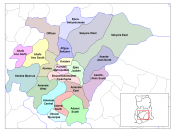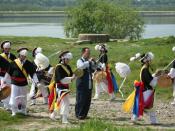CHAPTER ONE
INTORDUCTION
1.0 Background to the study
Over recent years there has been much interest in the way that representations of the rural contribute to the discourses of rurality of everyday life in the countryside (Cloke, 2003a; Halfacree, 2006), with this, it is to establish the fact that thing of the old are gradually being forgotten, including some kind of music which were being used. Music is an asset to every society in the world, doing away with music is like ignoring water in life which is impossible because music is life and life is music. In Africa and probably other parts of the world, music is regarded not only as a medium of artistic expression but also as providing an avenue for individual and corporate expression of experience. In religious rituals, sacrifices and worship in general, music is used to praise chiefs, wealthy people and other important personalities in the community as well as in contact between man and man, a means of object of worship, music forms a means of communication (Nketia, 1965).
Also, underway in Europe in the nineteenth century was the development of traditional music collection and analysis. While Traditional music studies had already known several centuries of activity, the growth of nationalism in the 1800s had served to intensify efforts for musicians and folklorists to spread into the countryside in Germany, France, Italy, or elsewhere, to seek out the music that was at the heart of a nation's expressive self. Until at least 1910, traditional music is as historically ancient, rich, and diverse as the continent itself. Traditional music is passed down orally (or aurally). It is not written, and it also relies heavily on percussion instruments of every variety, including xylophones, drums, and tone-producing instruments such as the mbira , atenteben or "thumb...


